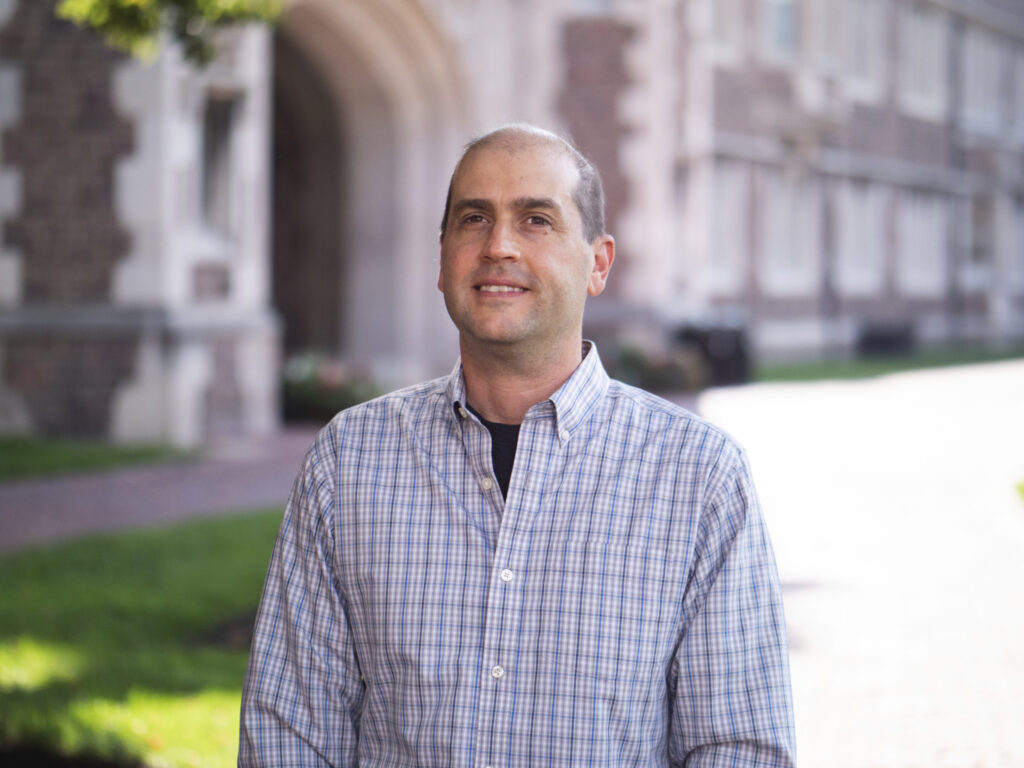The ocean floor is vast and varied, making up more than 70% of the Earth’s surface. Scientists have long used information from sediments at the bottom of the ocean — layers of rock and microbial muck — to reconstruct the conditions in oceans of the past.

These reconstructions are important for understanding how and when oxygen became available in Earth’s atmosphere and ultimately increased to the levels that support life as we know it today.
Yet reconstructions that rely on signals from sedimentary rocks but ignore the impact of local sedimentary processes do so at their own peril, according to geoscientists including David Fike in Arts & Sciences at Washington University in St. Louis.
Their new study published Feb. 26 in Science Advances is based on analyses of a mineral called pyrite (FeS2) that is formed in the presence of bacteria. With its chemical-reduced iron (Fe) and sulphur (S), the burial of pyrite in marine sediments is one of the key controls on oxygen levels in Earth’s atmosphere and oceans.
The researchers compared pyrite in sediments collected in a borehole drilled in the shelf just off the eastern coast of New Zealand with sediments drilled from the same ocean basin but hundreds of kilometers out into the Pacific.
“We were able to get a gradient of shallow to deep sediments and compare the differences between those isotopic compositions in pyrite between those sections,” said Fike, professor of Earth and planetary sciences and director of environmental studies at Washington University.
“We demonstrate that, for this one basin in the open ocean, you get very different signals between shallow and deep water, which is prima facie evidence to argue that these signals aren’t the global fingerprint of oxygen in the atmosphere,” said Fike, who also serves as director of Washington University’s International Center for Energy, Environment and Sustainability (InCEES).
Instead of pointing directly to oxygen, the same signals from pyrite could be reinterpreted as they relate to other important factors, Fike said, such as sea level change and plate tectonics.
Fike and first author Virgil Pasquier, a postdoctoral fellow at the Weizmann Institute of Sciences in Israel, first questioned the way that pyrite has been used as a proxy in a study published in PNAS in 2017 using Mediterranean Sea sediments. For his postdoctoral research, Pasquier has been working with professor Itay Halevy at the Weizmann Institute to understand the various controls on the isotopic composition of pyrite. Their results raise concerns about the common use of pyrite sulfur isotopes to reconstruct Earth’s evolving oxidation state.
“Strictly speaking, we are investigating the coupled cycles of carbon, oxygen and sulfur, and the controls on the oxidation state of the atmosphere,” Pasquier said.
“It’s much more sexy for a paper to reconstruct past changes in ocean chemistry than to focus on the burial of rocks or what happened during the burial,” he said. “But I find this part even more interesting. Because most microbial life — especially back when oxygen was initially accumulating in the atmosphere — occurred in sediments. And if our ultimate goal is to understand oxygenation of the oceans, then we have to understand this.”
For this study, the team conducted 185 sulfur isotope analyses of pyrite along the two boreholes. They determined that changes in the signals in pyrite from the nearshore borehole were more controlled by sea level-driven changes in local sedimentation, rather than any other factor.
In contrast, sediments in the deeper borehole were immune to the sea-level changes. Instead, they recorded a signal associated with the long-term reorganization of ocean currents.
“There is a water depth threshold,” said Roger Bryant, a co-author and PhD graduate of Fike’s laboratory at Washington University, now a postdoctoral fellow at the University of Chicago. “Once you go below that water depth, sulfur isotopes apparently are not sensitive to things like climate and environmental conditions in the surface environment.”
Fike added: “The Earth is a complicated place, and we need to remember that when we try to reconstruct how it has changed in the past. There are a number of different processes that impact the kinds of signals that get preserved. As we try to better understand Earth’s long-term evolution, we need to have a more nuanced view about how to extract information from those signals.”



